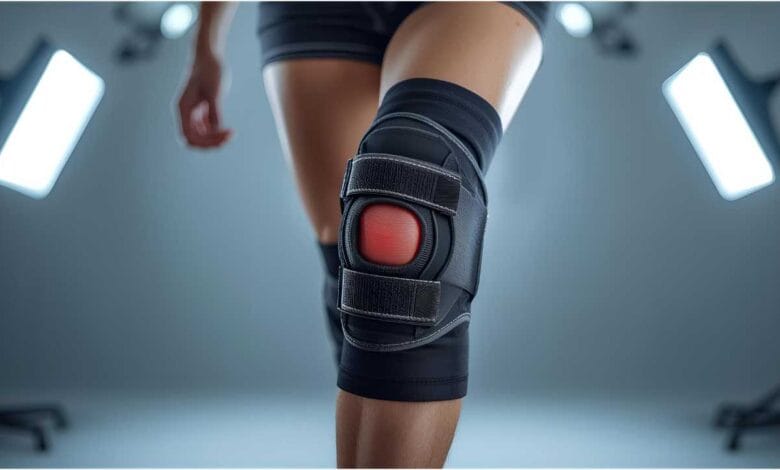Knee Brace Support for Pain Relief and Stability

One of the most intricate joints in your body is your knee. They carry your weight, absorb shock, and help you move freely every day. But when pain, injury, or weakness strikes, even walking across a room can feel like a challenge. That’s where a knee brace comes into the picture.
Whether you’re an athlete recovering from injury, someone with arthritis, or just dealing with instability, a knee brace might be the tool your body’s been asking for—without you even realizing it.
Types of Knee Braces and Their Purpose

Not all knee braces are created equal. Some are soft and flexible, others are rigid and reinforced. The right one for you depends on your condition, your activity level, and your recovery goals.
Here’s a quick comparison of the most common types of knee braces and their main purposes:
| Type of Knee Brace | Primary Use | Support Level | Best For |
| Compression Sleeves | Swelling, mild pain | Light | Arthritis, general support |
| Wraparound Braces | Mild instability | Moderate | Ligament sprains, early rehab |
| Hinged Knee Braces | Post-surgery, ligament injuries | High | ACL, MCL recovery |
| Knee Straps (Bands) | Tendonitis, patellar pain | Targeted | Jumper’s knee, runner’s knee |
| Custom Knee Braces | Specific injuries | Personalized | Severe instability, advanced rehab |
Choosing the wrong brace might not cause harm, but it might not do much good either. Knowing the difference is key to finding effective support.
How Knee Braces Work to Support and Protect
Knee braces work in multiple ways. They don’t magically “heal” your knee, but they help manage stress, limit motion where needed, and give you the confidence to stay active during recovery.
Compression braces reduce swelling and improve circulation. Hinged braces, on the other hand, control the range of motion after surgery or major ligament damage. Some braces redistribute weight to relieve pressure from certain parts of the knee, particularly helpful for people with osteoarthritis.
It’s not about wearing a brace forever—it’s about giving your knee the support it needs at the right time so you can get back to moving the way you want.
When Should You Wear a Knee Brace’s?
This question depends on the specific condition or goal. Some people wear knee braces every day, others only when playing sports or exercising.
Common reasons to use a knee include:
- Recovering from a torn ACL or meniscus
- Managing chronic arthritis pain
- Preventing injury during high-impact sports
- Alleviating pressure in the patellar tendon
- Boosting confidence in a weakened or unstable joint
Let’s break it down further:
| Condition or Goal | Recommended Knee Brace | Frequency of Use |
| Post-surgery rehabilitation | Hinged brace | Daily, as prescribed by doctor |
| Mild joint instability | Wraparound or compression sleeve | During activity |
| Patellofemoral pain | Knee strap | During sports or walking |
| Osteoarthritis | Unloader brace | Daily |
| General soreness/swelling | Compression sleeve | As needed |
Keep in mind—braces are tools, not treatments. They should go hand-in-hand with rehab, stretching, strengthening, and proper medical guidance.
Benefits of Using a Knee’s Brace
When used properly, knee braces can offer more than just physical support. They can enhance both performance and peace of mind.
Reduces Pain and Swelling
Braces with compression features help reduce inflammation. This is especially useful for arthritis or post-activity soreness.
Improves Confidence
Knowing that your knee is supported can reduce fear of movement, especially after injury. Confidence plays a major role in recovery and performance.
Limits Harmful Movements
Post-surgery or after ligament injuries, restricting movement is crucial. Hinged braces help prevent overextension or twisting, protecting healing tissues.
Enhances Performance
Some athletes wear knee’s braces preventively to stabilize joints during intense training. It’s about staying ahead of injuries before they happen.
Affordable and Accessible
Compared to surgery or physical therapy, many knee braces are a low-cost, accessible option that can provide immediate relief and support.
Risks and Misuse: What to Watch Out For
While knee’s braces are mostly safe, misuse can sometimes lead to unexpected setbacks.
Wearing a brace for too long or relying on it too heavily might cause your muscles to weaken. It’s tempting to depend on a brace instead of rebuilding strength—but that defeats the purpose.
Improper sizing is another common mistake. An overly tight brace may impede blood flow. Too loose, and it won’t offer the needed support.
If you’re not sure, always consult a physical therapist or orthopedist.
How to Pick Your Ideal Knee Brace
With so many choices online and in stores, picking a knee brace can be overwhelming. But asking the right questions can make all the difference.
- What’s the main reason I need it—pain relief, injury recovery, or prevention?
- Do I need full support or just light compression?
- Will I wear it during sports, all day, or just at night?
- Have I talked to a doctor or physical therapist?
Also consider materials. Neoprene offers warmth and support. Knit fabrics tend to be breathable and better for daily wear. Hinged braces often include metal or hard plastic components for stability.
Measure your leg carefully. Most braces come with sizing guides, and choosing the right fit is non-negotiable.
Care and Maintenance Tips for Your Knee Brace’s

Like any tool, a knee brace needs upkeep. If it’s dirty, worn out, or smells like an old gym sock, it’s probably time for cleaning—or replacing.
- Hand wash or use a gentle cycle in cold water
- Air dry to preserve elasticity
- Avoid fabric softeners or bleach
- Inspect for worn straps or stretched materials regularly
Proper care helps your brace last longer and stay effective.
Final Thoughts on Knee Braces
Knee pain can slow down anyone—from athletes to seniors, weekend warriors to office workers. A knee brace won’t solve everything, but it can make a major difference. Whether you’re healing, training, or just trying to get through your day without discomfort, the right brace gives your knee a chance to do its job—safely and confidently.
Q&A: Frequently Asked Questions
Q: Can I wear a knee brace’s all day?
A: It depends on the type of brace and your condition. Compression sleeves can often be worn all day, but rigid braces should usually only be worn as advised by your doctor.
Q: Will a knee brace fix my injury?
A: No. Knee braces support healing but don’t cure injuries. They should be used alongside physical therapy and other treatment methods.
Q: How tight should my knee brace be?
A: Snug, but not restrictive. You should feel supported, not numb. If your skin is getting red or your leg feels cold, it’s too tight.
Q: Do knee’s braces work for arthritis?
A: Yes. Many people with osteoarthritis find relief using unloader braces or compression sleeves that reduce joint pressure.
Q: Is it okay to wear a knee brace while sleeping?
A: It’s generally not recommended unless directed by a healthcare provider. Wearing one overnight could restrict blood flow or cause discomfort.
Q: Can I run with a knee brace’s on?
A: Yes, if the brace is designed for high-impact activity. Choose a model that stays secure and doesn’t restrict natural movement.
Q: How do I know if I need a knee brace or surgery?
A: A knee brace is usually for support and mild-to-moderate issues. Surgery may be required for severe damage or when conservative treatments fail. Always consult a medical professional.




